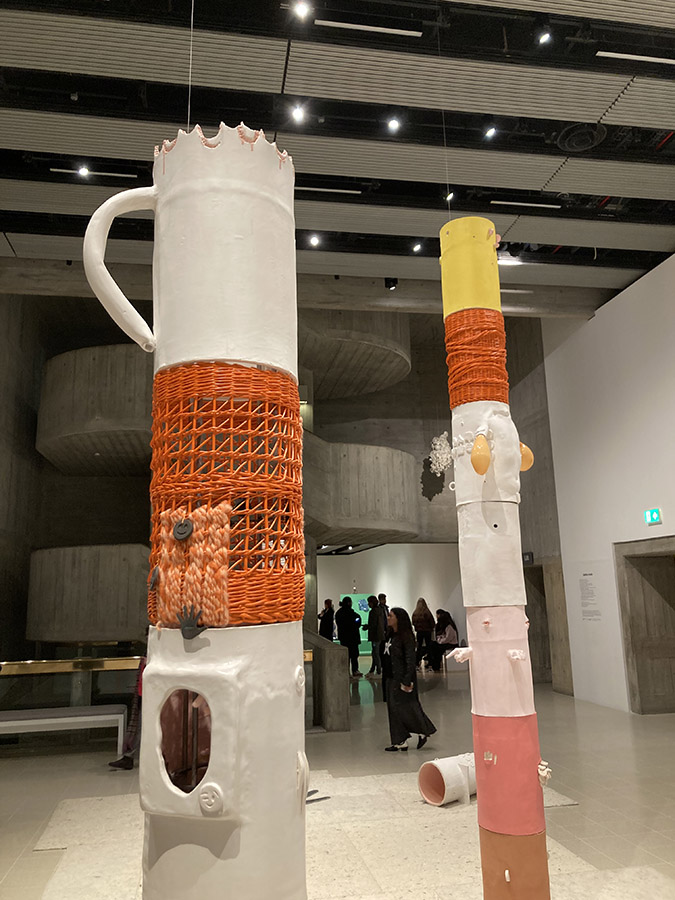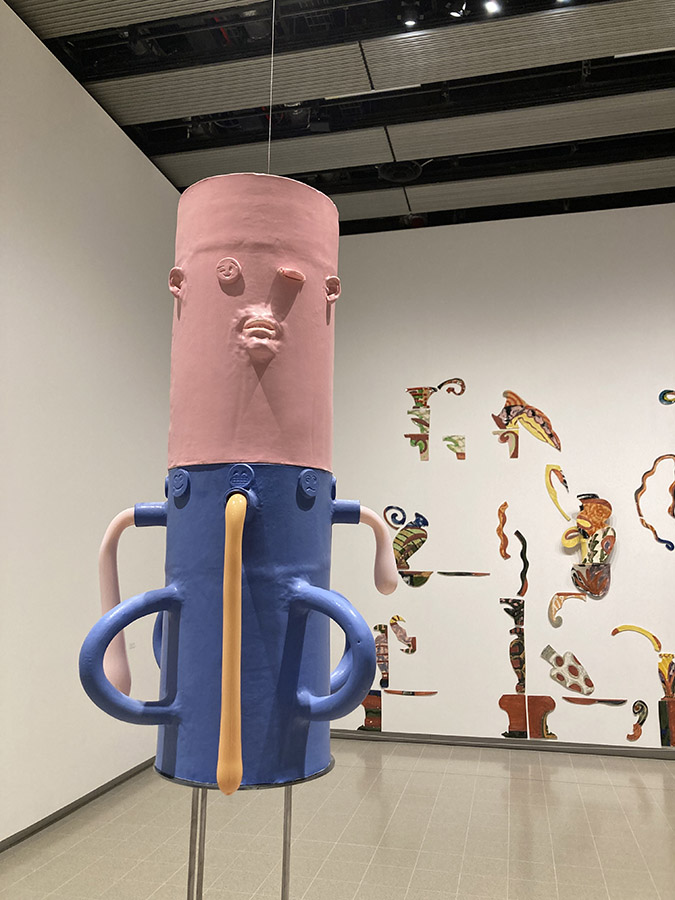Exhbition reviews by Cadi Froehlich LG
Objects of Desire at the Design Museum and
Strange Clay: Ceramics in Contemporary Art at the Hayward
Much has been written about the resurgence of ceramics in recent years. Artists have been rediscovering it and folk in general have been delighting in getting their hands dirty and tapping into creating with clay. Personally I was driven by desire to really touch and connect with my work physically, and after years of injuries from sheets of copper I was ready to mix it up.
This renewed interest led to my excited anticipation of the Hayward’s new show, their second in their new presentations after a prolonged closure.
As I bided my time for the arranged date, an editorial team discussion around the theme of this newsletter – Design – brought the surrealist-based show at the Design Museum to my attention, and I decided the two shows might compliment each other perfectly.
In fact I saw the Objects of Desire first, and it felt like a solid review of surrealism in 3D work. Early paintings from the 1940’s like Leonora Carrington’s The Old Maids quickly gave way to experimental transformations of the familiar and practical objects which share our lives. In this painting Carrington plays with the scale of her figures along with the anthropomorphising of objects such as the legs of the chair. Moving through the space we are quickly confronted with furniture referencing these limbs, and with that the play of perception and scale begins.

Through the second half of the 20th Century artists steadily worked with references, scale and context, with artists such as Roberto Sebastian Matta reimagining Magritte’s Son of Man as a huge apple squashed into a bowler hat.
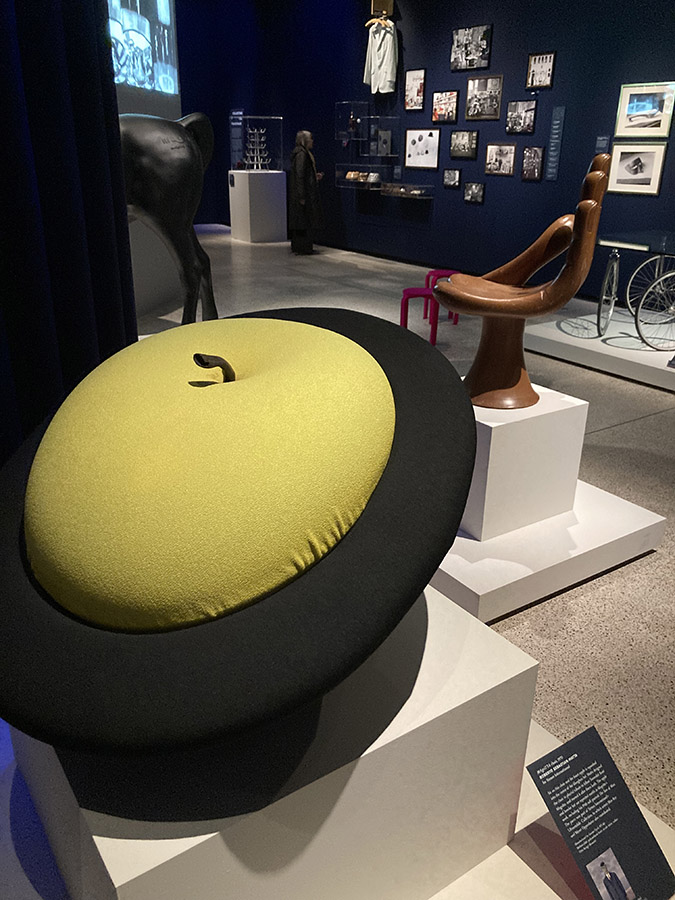
Contemporary works shown are more considered in material, and abandon notions of practical uses. Najla El Zein’s work employs marble juxtaposed with hay in the familiar form of a brush, with an absurdist purpose – we experience the idea of textures rather than function.

Moving on to Strange Clay at the Hayward, the work boldly claims the space from the off. Large scale installations made of ceramics are immediately strange – small household objects being the usual form we find clay in. Here, we are met immediately by the huge columns by Jonathan Baldock. There are ways in – giant mug handles, embellishments of human features and voices, but they are disconcertingly tall with the potential instability that comes with that. The mix of materials, the handmade weaving, the drippy glass, added to the surreal impression of an ambitious reinterpretation of the totem pole.
The large tiled wall pieces by Lubna Chowdhary are arresting, geometric, almost industrial designs, which reward closer inspection to show imperfections and the human touch, which makes these feel painterly.
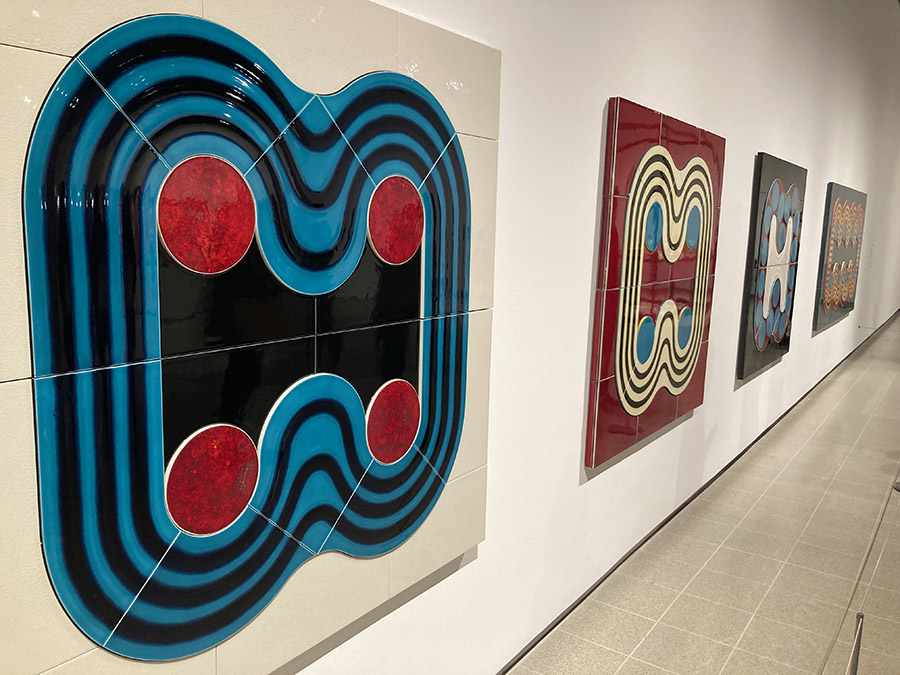
The Old Pear Tree by Beate Kuhn would not have been out of place at the surrealist show. Half-cups cradle organic limbs in a sensual impression of embryonic pears, and her style of glaze adds to the sense of the maker’s hand in this piece. Kuhn was brilliant at interpreting forms from nature into geometric/organic sculptures which allowed the clay to showcase its best features: strength, plasticity and surface.

These best features are pushed to their limits further along by Takuro Kuwata, who presents towering sculptures over 2m tall, seeming to drip with a petrified goo, which is the result of skilful play with combinations of different clays and glazes.
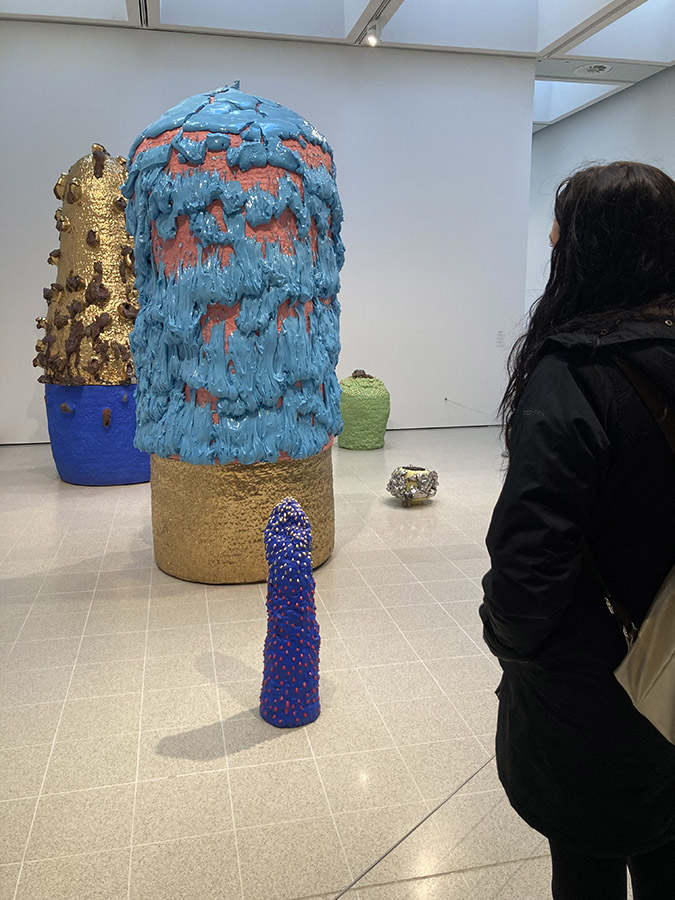
This is the image used to publicise the show, but I was totally unprepared for the scale of the work. The sense of volume, of texture and the practical limitations was impressive, and they still remain playful, irreverent objects.
Sitting opposite Kuwata’s vivid, colourful installation is a selection of vessels by celebrated ceramist Magdalene Odundo. These quiet considered pieces are familiar enough in size and form to draw us in closely, but the protruding naval and hints of vertebra immediately lead to anthropomorphising them, and they take on airs of poetic self assurance.
I think this blend of craftsmanship, the making skills, the economy of material and the human references are the most successful example of how strangely familiar yet unpredictable clay can be.
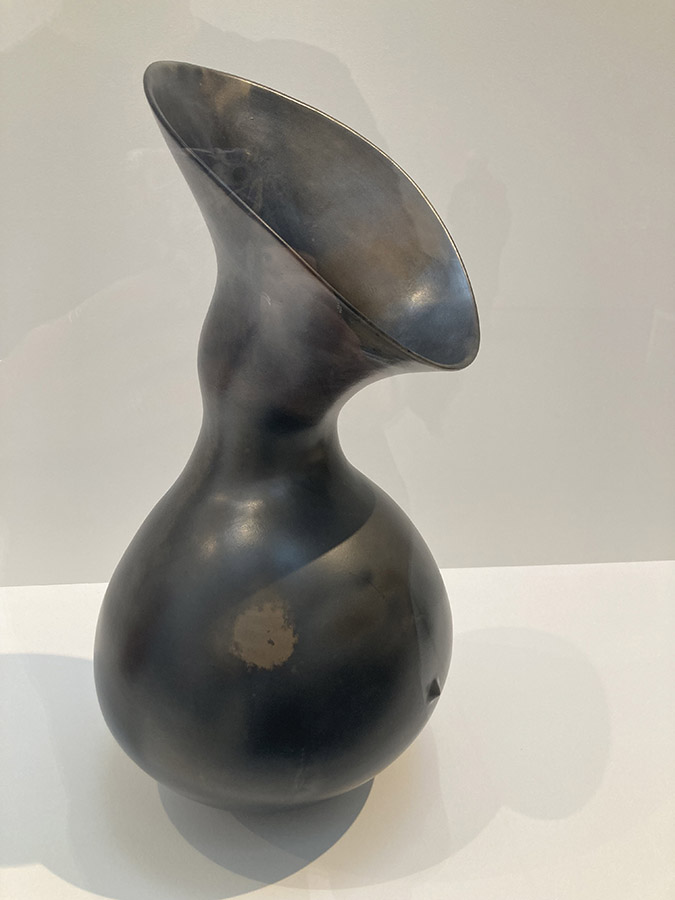
Just as surrealists asked us to consider a chair as other than a chair, Odundo offers us pause to consider the potential for animation and surprise in a pot which is more than a pot.
Cadi Froehlich LG, 2022
www.cadifroehlich.com
Objects of Desire: Surrealism and Design 1924 – Today
Until 19 Feb 2023
the Design Museum
224-238 Kensington High Street
London W8 6AG
Strange Clay: Ceramics in Contemporary Art
Until 8 Jan 2023
Hayward Gallery
Southbank Centre
Belvedere Road
London SE1 8XX
All photos Cadi Froehlich © the artists and their galleries

